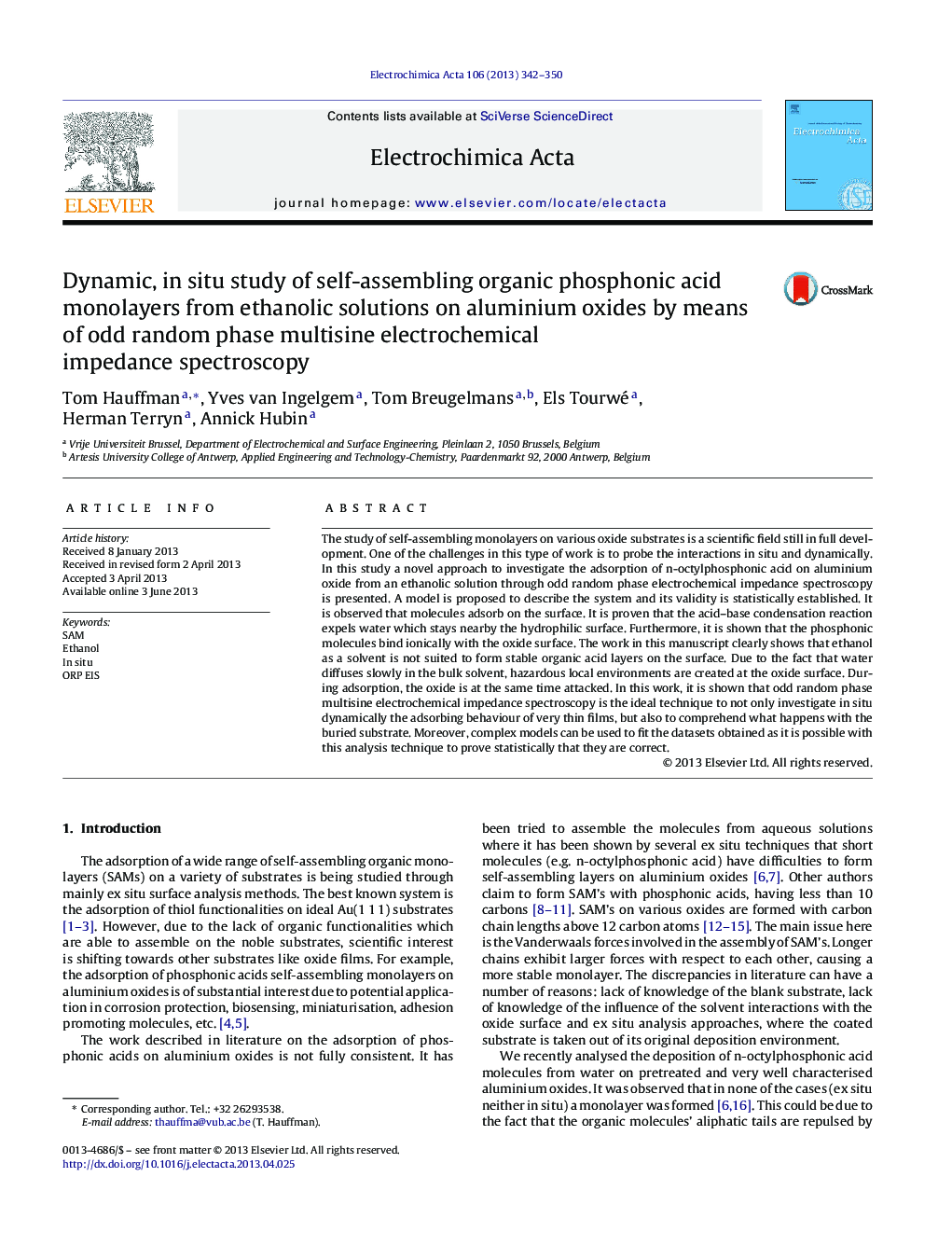| Article ID | Journal | Published Year | Pages | File Type |
|---|---|---|---|---|
| 6617111 | Electrochimica Acta | 2013 | 9 Pages |
Abstract
The study of self-assembling monolayers on various oxide substrates is a scientific field still in full development. One of the challenges in this type of work is to probe the interactions in situ and dynamically. In this study a novel approach to investigate the adsorption of n-octylphosphonic acid on aluminium oxide from an ethanolic solution through odd random phase electrochemical impedance spectroscopy is presented. A model is proposed to describe the system and its validity is statistically established. It is observed that molecules adsorb on the surface. It is proven that the acid-base condensation reaction expels water which stays nearby the hydrophilic surface. Furthermore, it is shown that the phosphonic molecules bind ionically with the oxide surface. The work in this manuscript clearly shows that ethanol as a solvent is not suited to form stable organic acid layers on the surface. Due to the fact that water diffuses slowly in the bulk solvent, hazardous local environments are created at the oxide surface. During adsorption, the oxide is at the same time attacked. In this work, it is shown that odd random phase multisine electrochemical impedance spectroscopy is the ideal technique to not only investigate in situ dynamically the adsorbing behaviour of very thin films, but also to comprehend what happens with the buried substrate. Moreover, complex models can be used to fit the datasets obtained as it is possible with this analysis technique to prove statistically that they are correct.
Related Topics
Physical Sciences and Engineering
Chemical Engineering
Chemical Engineering (General)
Authors
Tom Hauffman, Yves van Ingelgem, Tom Breugelmans, Els Tourwé, Herman Terryn, Annick Hubin,
